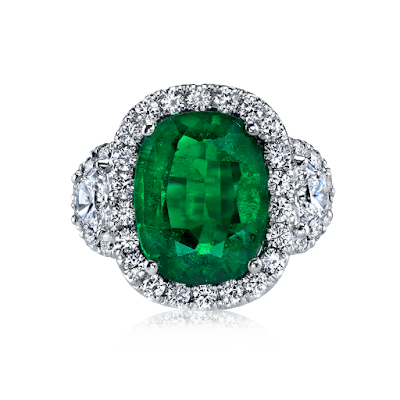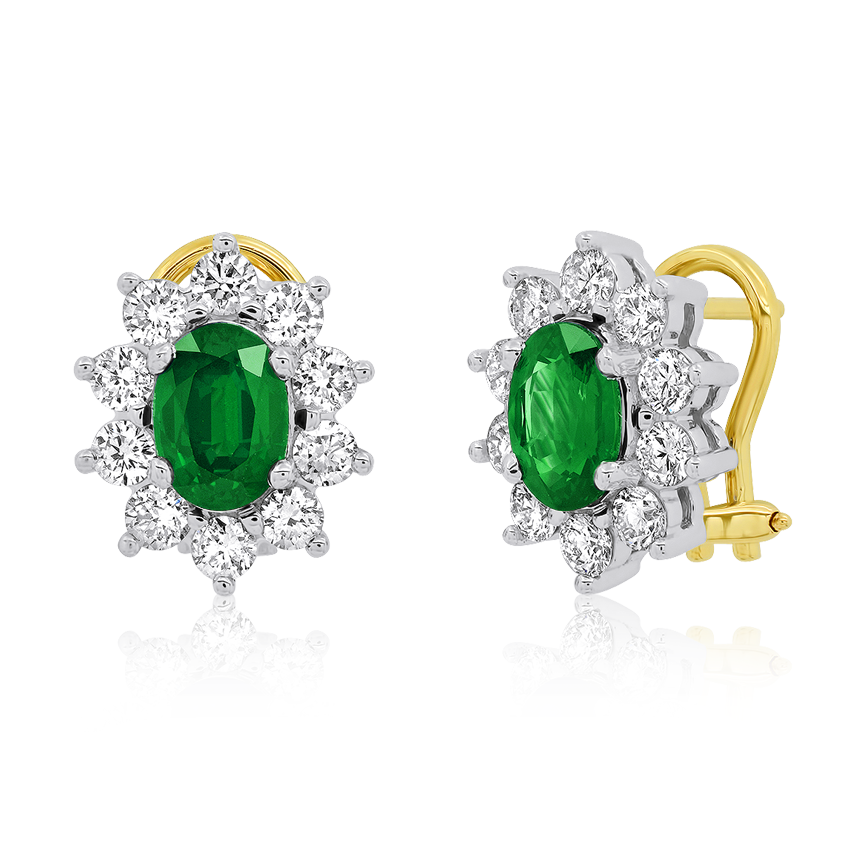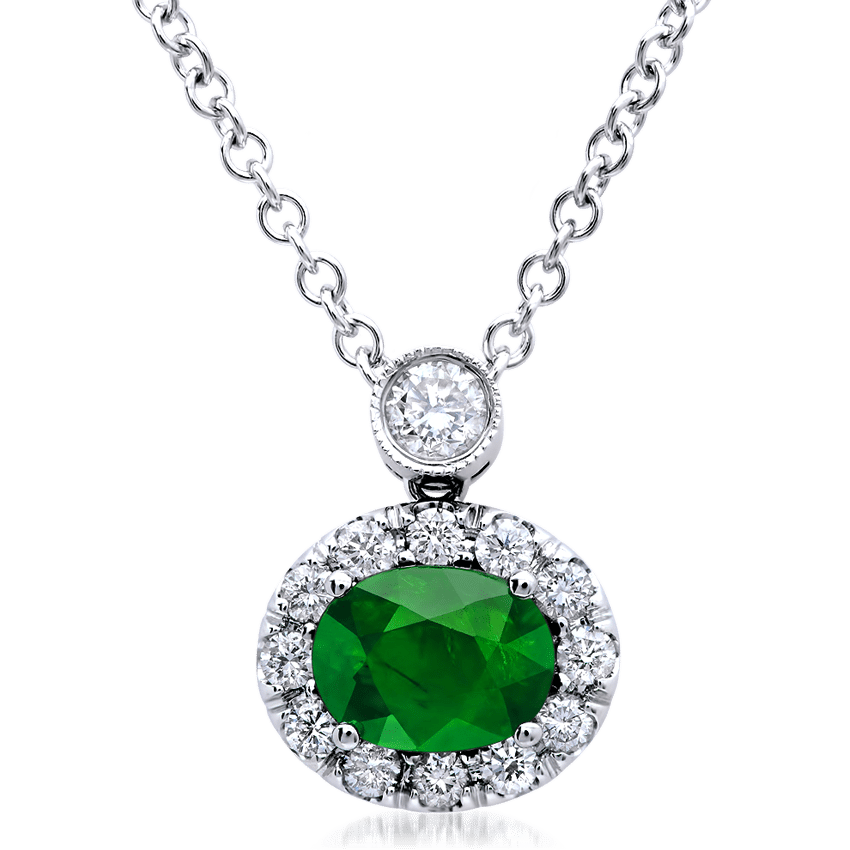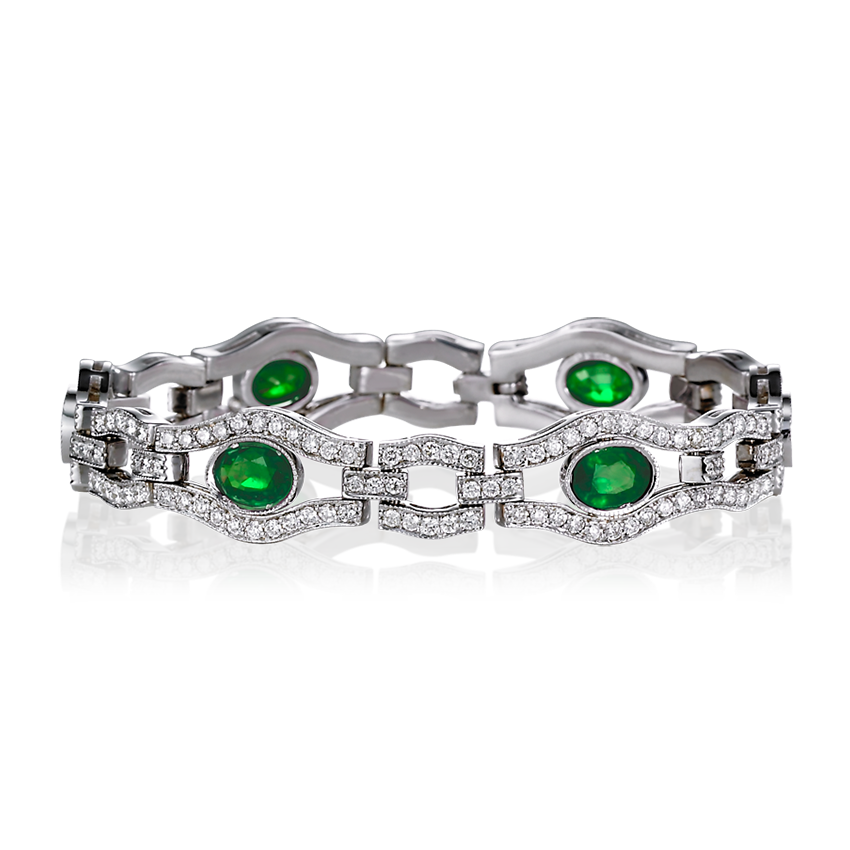Emerald Gemstone & Jewelry Buying Guide
Emerald is the green variety and the most famous member of the beryl mineral family, with its name coming from the old Greek word “smaragdus” which means green. There are other green color gemstones such as peridot and tourmaline, but emerald has always been the most desirable and precious of all.
Brief History
Known emerald mines date back to over 300 years BC in Egypt, where it was the royalty’s favorite colored gemstone for generations.
A gem associated with many ancient beliefs and myths, people believed it has psychic powers and able to foresee the future when placed in mouth and held under the tongue. Other beliefs included ability to protect against evil spell, reveal the truth or lie, improve talking skills and cure deadly diseases.
Emerald is the birthstone for the month of May and the gemstone representing the 20th and 35th wedding anniversaries.
Technical Specs
Emerald’s color is vibrant green, its chemical formula is Be3Al2Si6O18, its Refractive Index ranges 1.577 – 1.583, Birefringence range of 0.005 – 0.009, Specific Gravity of 2.72 and its MOHS Hardness varies between 7.5 – 8.
Color
Elements that affect emerald’s color are chromium, vanadium, and iron. Their presence or lack of and their amounts determine the color of an emerald.
As for all other precious colored gemstones, color is the most important factor in emerald’s quality. The most desirable color for emeralds is vivid, rich green that’s not too dark.
Emerald’s tone of green color is generally associated with location of its mine. Colombian emeralds have a warmer, pure green color while emeralds from Zambia mines are generally bluish green and darker / deeper in color.
When examining color, a common issue to watch out for is color zoning which refers to uneven distribution of color within the stone with some areas lighter than the rest.
To recognize the quality of an emerald’s color, it is highly recommended to compare one or more emeralds in the same shape and size range at time of purchase.
Clarity
Clarity refers to presence or lack of internal inclusions. The more transparent (free of inclusions), the better is clarity grade and higher in value.
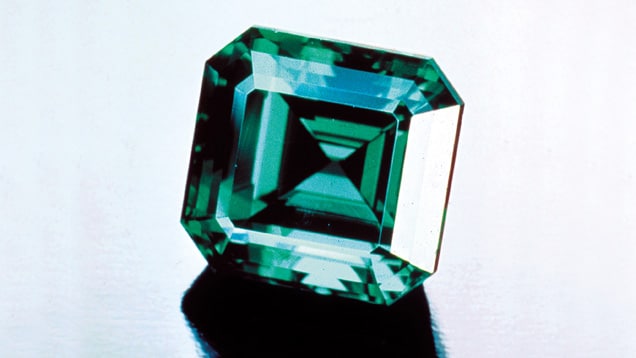
Cut
Before cutting the rough, emerald cutter must consider its depth of color, durability, and inclusions as the goal is to achieve the best color and clarity while minimizing loss in weight / size of the stone. Standards used for grading emeralds’ cut grade is not the same as for diamonds because the most important goal is to preserve and achieve the best color. Yet it is important to choose a well cut emerald with good proportions as you don’t want to pay for extra weight due to large depth.
Carat Weight
Emeralds come in a wide range of sizes and carat weights. As small as 1/100 of a carat, all the way up to hundreds of carats.
As the emerald’s size increases, so does its price per carat, especially in higher quality gem grade stones.
Shape
Emeralds come in variety of shapes. Most common shapes found in small sizes are round and square as they are combined with diamonds and used in manufacturing fine jewelry. Medium sizes (¼ – ½ carat) are generally used as diamond ring side stones or accents. Larger sizes (½ carat and larger) commonly seen as center stones in fine jewelry pieces are in oval, pear shaped, cushion cut and most popular of all, emerald cut.
Emerald Jewelry
Emerald rings are popular by women of all ages. Brides born in May, customize and personalize their engagement rings beautifully by incorporating emeralds in their ring’s design. Married couples buy emerald 3-stone rings to celebrate their wedding anniversaries. And being the favorite colored gemstone of royalty throughout the times, vintage emerald rings are loved by women of all ages.
From classic studs with halo to dangling pear shaped drops to hoops, emerald earrings make extraordinary presents for women. Their beautiful lush green color and availability in all shapes and sizes, make them a favorite of natural gemstone jewelry manufacturers.
Gem quality emeralds in emerald cut, oval and pear shaped are combined with round and fancy shape diamonds in creating some of the most luxurious necklaces in the world like the one once owned by Elizabeth Taylor. Good news is you don’t have to be super rich to afford an emerald necklace or pendant as emeralds come in all sizes and prices.
Emerald and diamond bracelets, in stiff bangle to flexible tennis to magnificent antique style with pave and bezel set diamonds, they have been a favorite of precious colored gemstone bracelet lovers throughout the times.
How to Select and Buy
Information below, guides you on how to select best emerald gemstone jewelry when shopping.
- The most important quality factor for an emerald is its color. Review information provided under ‘Color’ section above and when shopping, always compare several emeralds in the same shape and size range before buying.
- Emerald you select should be transparent with no major inclusions visible to the naked eye.
- Cut, polish and symmetry of the emerald you select must be good as brilliancy of any gem depends on its cut grade.
- When buying any piece of fine jewelry with emerald(s), consider it’s A) Uniqueness and beauty in design B) Craftsmanship C) Wearing comfort and D) Warranty
- Always shop with reputable jewelers and jewelry stores who offer quality, value and outstanding customer service, long after any sale transaction.

